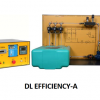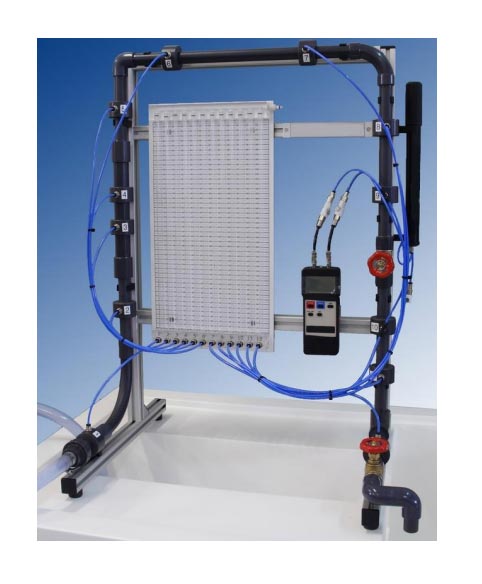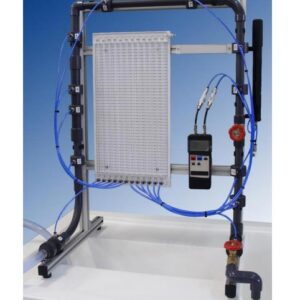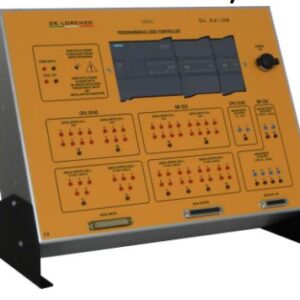TRAINING OBJECTIVES
• Study the relationship between load losses and the fluid speed in the piping.
• Measurement and testing of secondary load losses which are produced in installation elements such as:
– Elbows 90°
– Curves 90°
– Long curves 90°
– Elbows 45°
– Abrupt widening
– Abrupt narrowing
– Gate valve
• Calculating coefficients of loss “K” corresponding to each of the elements mentioned above
• Using different types of gauges:
– Water column
– Electronic differential pressure gauge
TECHNICAL DATA
The unit has an electronic differential pressure gauge which allows measurement with a wider range of the head loss produced in the gate valve with different openings.
The flow measurements are done by using the volumetric tank of the hydraulic bench (required), which is also possible to study the relationship between pressure loss and fluid speed.
Pipe diameters:
• Main pipe: Inner Ø = 21.2mm ; Outer Ø = 25mm
• Narrowing / abrupt widening: Inner Ø = 27.2mm ; Outer Ø = 32mm
Components to study:
• Long curves 90°
• Abrupt widening
• Abrupt narrowing
• Elbows 90°
• Curves 90°
• Gate valve
• Short curve 90°
• Elbows 45°
Gauges:
• Manometer with 12 water columns of 440mm tubes
• Electronic differential pressure gauge
Additional features:
The machine has a hand pump for height adjustment of the multi-tube gauge reading.
ENERGY LOSSES IN BENDS
To calculate secondary losses caused by installation accessories, it is possible to compare the difference of pressures between measuring point upstream and downstream the element of interest.
It has to be subtracted the main losses due to the straight pipe segment.
When it is necessary to measure the pressure loss that occurs between two measuring points in different diameter pipes, it should be taken into account that not all static pressure difference corresponds to the pressure losses: this is due to the transformation from static to dynamic pressure because of the increasing speed.
The system contains all the possible configurations with 90° elbows, besides abrupt widening and narrowing and a gate valve.
These losses are read simultaneously through a gauge with multiple water columns; it displays clearly the difference between different types of bends, abrupt widening and narrowing, and valve.


















